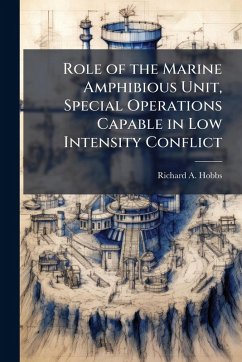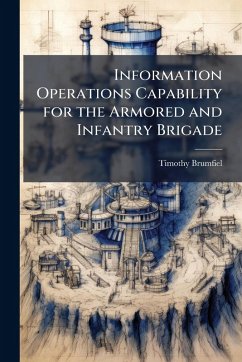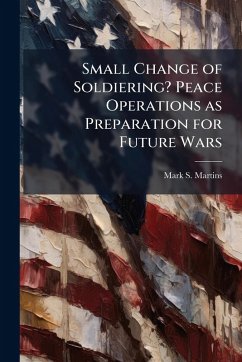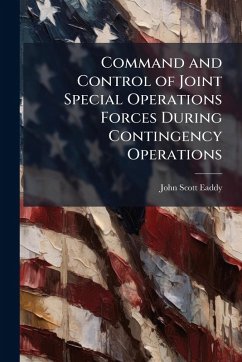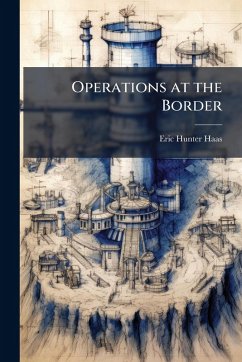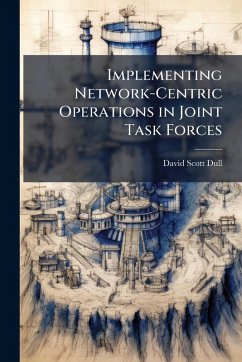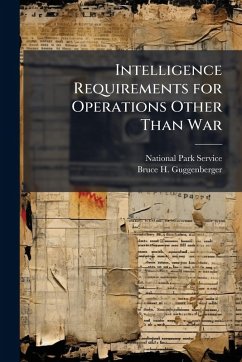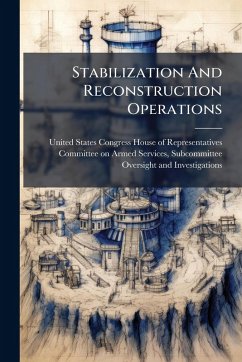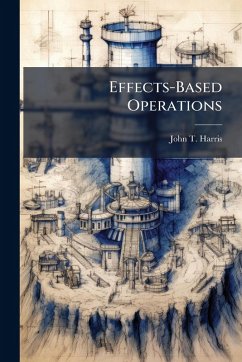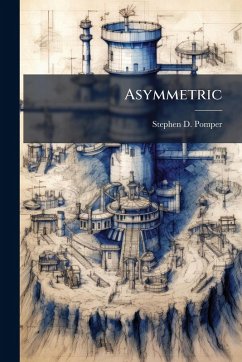
Rapid, Decisive Operations

PAYBACK Punkte
8 °P sammeln!
This monograph analyzed whether or not the current joint command and control system in place is sufficient for the rapidly changing contemporary operating environment. The end of the Cold War has not brought the worldwide stability that many thought would ensue, rather the dynamic environment facing the United States in the twenty-first century has created an environment far more likely to rely upon the military to respond to emerging crises and assist shaping foreign policy. The Goldwater-Nichols Act of 1986 laid the foundation for many of the military reforms witnessed during the final decad...
This monograph analyzed whether or not the current joint command and control system in place is sufficient for the rapidly changing contemporary operating environment. The end of the Cold War has not brought the worldwide stability that many thought would ensue, rather the dynamic environment facing the United States in the twenty-first century has created an environment far more likely to rely upon the military to respond to emerging crises and assist shaping foreign policy. The Goldwater-Nichols Act of 1986 laid the foundation for many of the military reforms witnessed during the final decade of the twentieth century, but at the operational level many of the same problems encountered before the Goldwater-Nichols Act are still prevalent during current military operations. This monograph reviewed the establishment of three Joint Task Forces: JTF 120 commanding OPERATION URGENT FURY in Grenada, JTF Guardian Assistance, the humanitarian relief operation to Central Africa, and JTF Noble Anvil in OPERATION ALLIED FORCE and contrasted them with the ongoing experimentation being conducted by the United States Joint Forces Command for Standing Joint Task Force headquarters. All three of these JTFs experienced initial problems during the establishment of the JTF, resulting in problems during the execution phases of the operation. Three of the characteristics of operational art from Joint Publication 3-0, Doctrine for Joint Operations, were used to evaluate the research question: Does the United States need to establish Standing Joint Task Forces to meet its security needs in the twenty-first century? The characteristics used in this assessment were synergy, anticipation, and timing and tempo. The monograph concluded that the model identified by Joint Forces Command of placing a standing Joint Force Headquarters within the staff of each regional CINC would provide a rapid and decisive response to an emerging crisis and provide the best means of executing operational art dur This work has been selected by scholars as being culturally important, and is part of the knowledge base of civilization as we know it. This work was reproduced from the original artifact, and remains as true to the original work as possible. Therefore, you will see the original copyright references, library stamps (as most of these works have been housed in our most important libraries around the world), and other notations in the work. This work is in the public domain in the United States of America, and possibly other nations. Within the United States, you may freely copy and distribute this work, as no entity (individual or corporate) has a copyright on the body of the work. As a reproduction of a historical artifact, this work may contain missing or blurred pages, poor pictures, errant marks, etc. Scholars believe, and we concur, that this work is important enough to be preserved, reproduced, and made generally available to the public. We appreciate your support of the preservation process, and thank you for being an important part of keeping this knowledge alive and relevant.



